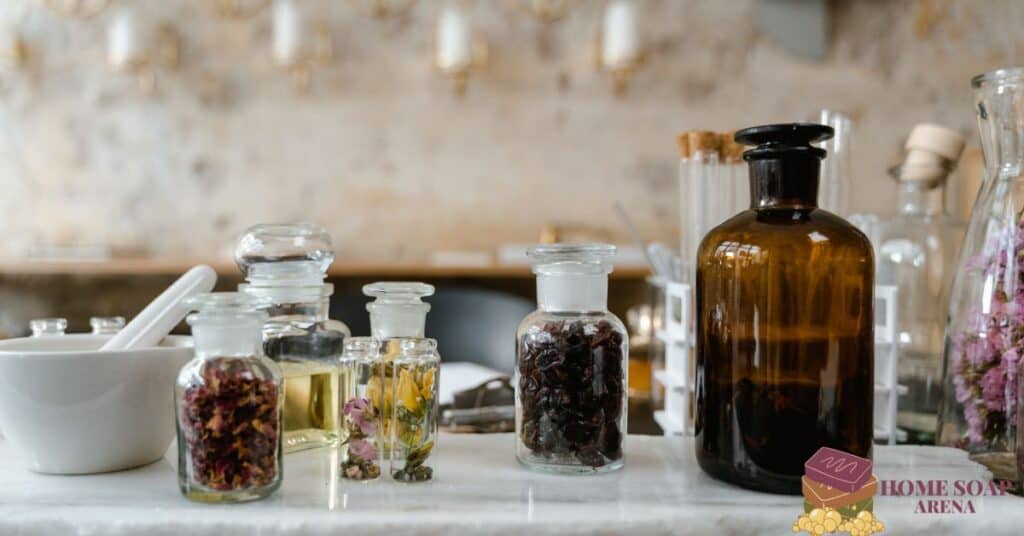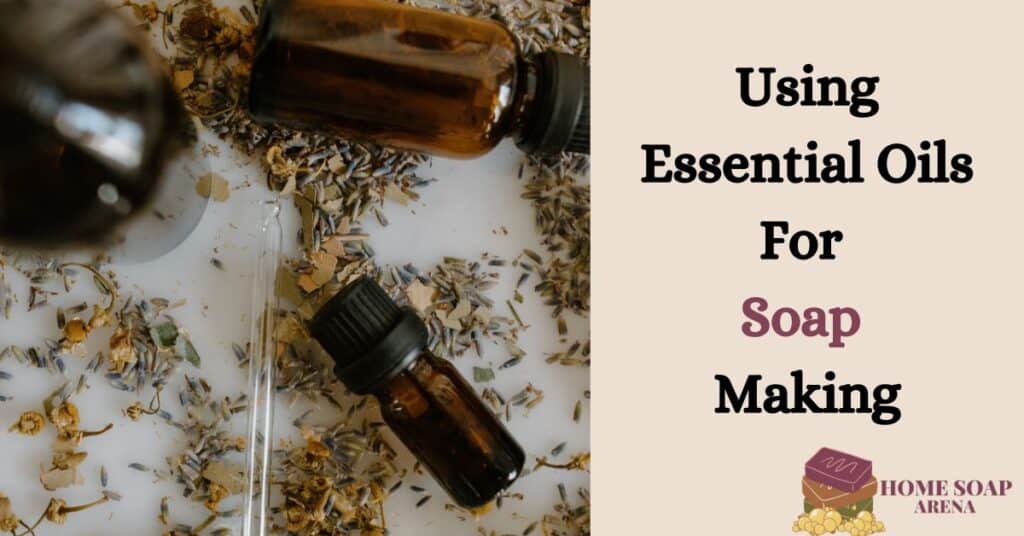Table of Contents
- What Makes An Oil Cleansing In Soap Making?
- How To Balance Cleansing Oils With Other Oils In Soap Making
- What Are The Best Oils For Cleansing in Soapmaking?
- Choosing Oils For Specific Soap Purposes
- Conclusion
If you are a soap maker, you know that the choice of oils can make a big difference in the quality of your soap.
Different oils have different properties and fatty acids that affect your soap’s lather, hardness, moisturizing, and cleansing abilities.
There is hidden potential in oils for cleansing in soap-making that reveals the ultimate secret to achieving skin that glows from within.
Cleansing oils unveils a realm of possibilities to unlock radiant, nourished skin naturally.
This guide navigates the intricacies of selecting and utilizing the best cleansing oils in soapmaking.
What Makes An Oil Cleansing In Soap Making?
An oil is cleansing when it produces a soap with unique characteristics that removes dirt, oil, impurities, and excess oil from the skin.
Without removing the skin’s natural moisture. Leaving it refreshed and balanced.
Cleansing oils are usually high in lauric, myristic, or ricinoleic acids, which are fatty acids that create a soap with a high cleansing number.
A cleansing number measures how well the soap dissolves in hard or salt water.
But it also indicates how much it strips moisture and oil from the skin.
A high cleansing number means the soap will be more cleansing and thus harsher on the skin.
A low cleansing number means it will not cleanse as well but will be gentler on the skin.
Some examples of oils with high cleansing numbers are coconut oil, palm kernel oil, babassu oil, murumuru butter, and castor oil.
These oils produce a very bubbly, lathery, and cleansing soap.
But they can also dry or irritate some skin types, mainly if used in high concentrations.
Therefore, balancing these oils with other oils with lower cleansing numbers and higher conditioning, moisturizing, or softening properties is crucial.
How To Balance Cleansing Oils With Other Oils In Soap Making
To balance cleansing oils with other oils, you need to consider the overall qualities of your soap recipe.
You want a soap that is not too hard or too soft, not too drying or too oily, not too bubbly or too flat, and not too cleansing or too mild.
To do this, you need to use a soap calculator to check the properties of your recipe and adjust the percentages of your oils accordingly.
A general rule of thumb is to keep your cleansing oils under 30% of your total oils.
You can also increase the superfat percentage, which is the amount of unreacted oil left in the soap after the saponification process is complete.
A higher superfat will make your soap more moisturizing and less harsh on the skin.
A typical superfat percentage is 5%; however, you can go up to 8% or 10% if you have very dry or sensitive skin.
Some examples of oils with low cleansing numbers and high conditioning, moisturizing, or softening properties are olive oil, shea butter, rice bran oil, avocado oil, sweet almond oil, apricot kernel oil, and sunflower oil.
These oils produce a soap with a creamy lather, mild cleansing power, and nourishing effects on the skin.
They also help to balance the hardness and longevity of your soap.
What Are The Best Oils For Cleansing in Soapmaking?
The best oils for cleansing in soap making depend on your preference, skin type, and soap purpose.
However, here are some suggestions based on common soapmaking goals:
Coconut Oil: If you want a very cleansing and bubbly soap, you can use coconut oil as your primary cleansing oil.
It produces a rich lather, cleanses deeply, and contributes to the hardness of soap bars.
Although it is a valuable ingredient in soap making, it can be too drying for specific skin types.
Hence, it is advisable to limit its usage to 20% or less of the total oils used and to increase the superfat percentage accordingly.
Palm Kernel Oil: Palm kernel oil enhances cleansing power and soap hardness.
Its inclusion in soap recipes contributes to a solid bar with excellent lather.
Murumuru Butter: Murumuru butter combines moisturizing properties with cleansing abilities, striking a harmonious balance.
It helps create soap bars that cleanse without leaving the skin dehydrated.
Castor Oil: The Secret Ingredient for Luxurious Lather is Castor oil, although used in smaller quantities, is a lathering powerhouse.
It enhances the quality of the lather and contributes to the overall cleansing experience.
Olive Oil: For a mildly cleansing and moisturizing soap, you can use olive oil as your primary conditioning oil.
Olive oil produces a soft soap with a creamy lather and mild cleansing power.
It is also gentle, nourishing, and suitable for various skin types, including sensitive skin. However, it can also make your soap less bubbly and less hard.
So, it would be best to balance it with harder or bubblier oils, such as coconut or palm kernel oil (not palm oil).
Choosing Oils For Specific Soap Purposes
Shampoo Bars: For shampoo bars, oils like argan, jojoba, and castor. Provide nourishment, promote hair health, and maintain a balanced scalp.
Shaving Bars: Shaving bars benefit from oils like olive, coconut, and shea butter, offering lubrication and protection for a smooth shaving experience.
Facial Bars: Facial bars thrive on oils like avocado, sweet almond, and chamomile-infused oil, providing gentle cleansing without irritating.
Body Bars: Body bars can be enriched with cocoa butter, shea butter, and apricot kernel oil to cleanse and moisturize the entire body.
Conclusion
Choosing the best oils for cleansing in soapmaking can be challenging, but it can also be a rewarding and enjoyable experience.
By understanding the properties of different oils and how they affect your soap recipe, you can create a soap that suits your needs and preferences.
Use a soap calculator to check your recipe’s qualities and adjust the oils’ percentages accordingly.
Creating a well-balanced soap recipe involves blending cleansing oils with others that provide conditioning, moisturizing, and softening benefits.



